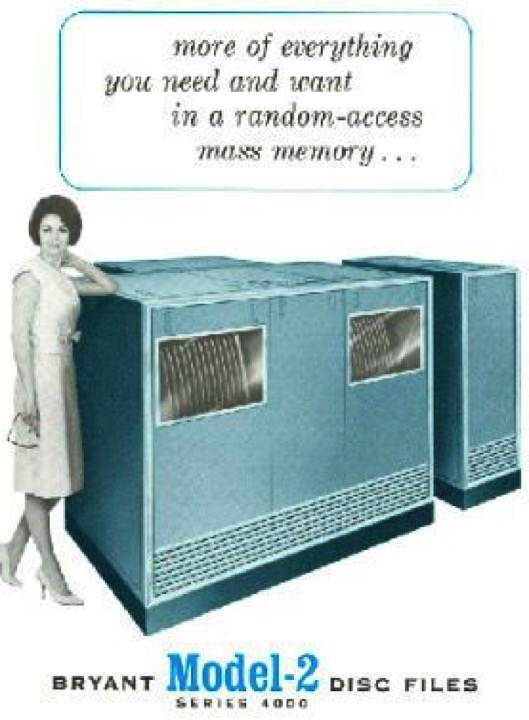History (1961): HDD Competitors Enter Into Market
Bryant Computer Products introduces units storing up to 205MB.
This is a Press Release edited by StorageNewsletter.com on March 5, 2018 at 2:27 pmThis article comes from the Computer History Museum.
1961: HDD competitors enter the market
Bryant Computer Products introduces units storing up to 205 MB
Bryant Model-2 Series 4000 Brochure
 (Computer History Museum Collection)
(Computer History Museum Collection)
Recognizing the threat to their business, established manufacturers of magnetic drum and tape storage units began to develop competing HDD devices.
Early market entrants included Librascope, Burbank, CA; Bryant Computer Products, Walled Lake, MI, and Univac.
The St. Paul, MN operation of the latter company, a division of Remington Rand that licensed the foreign rights to Rabinow’s disk patent, is said to have been ready to ship a drive in 1956 but delayed sales because it could hurt their near term drum revenue.
Bryant Computer Products (formerly Chucking Grinder Co) began work on a disk in 1959 and shipped a flying-head slider technology unit to the U.S. Army Signal Corps MOBIDIC project in November 1960. Featuring the first commercial application of zoned recording, the company introduced the 4000 Series disk drive products in 1961. Zoned recording increases a disk’s storage capacity by placing more data in the long outer tracks than the short inner tracks. Among the physically largest drives ever built, the Bryant units held up to 26 disks, each 39 inches in diameter rotating at up to 1,200rpm. Total capacity, was up to 205MB and access times were from 50 to 205ms. A CDC 6600 computer installed at Lawrence Livermore Labs, CA used multiple Bryant disk units.
According to Harvard Business School professor C. M. Christensen, 138 firms entered the disk drive business in the U.S. and overseas between 1956 and 1990. The number of active manufacturers peaked in 1985 at 75. By 1993 more than 100 had failed as the industry became one of the most competitive in high technology. As of 2015, only three remained; Seagate, Toshiba and Western Digital. This intense level of competition drove developments that yielded dramatic increases in areal density and therefore reductions in the cost per bit and established HDDs as the preferred form of computer storage.













 Subscribe to our free daily newsletter
Subscribe to our free daily newsletter

